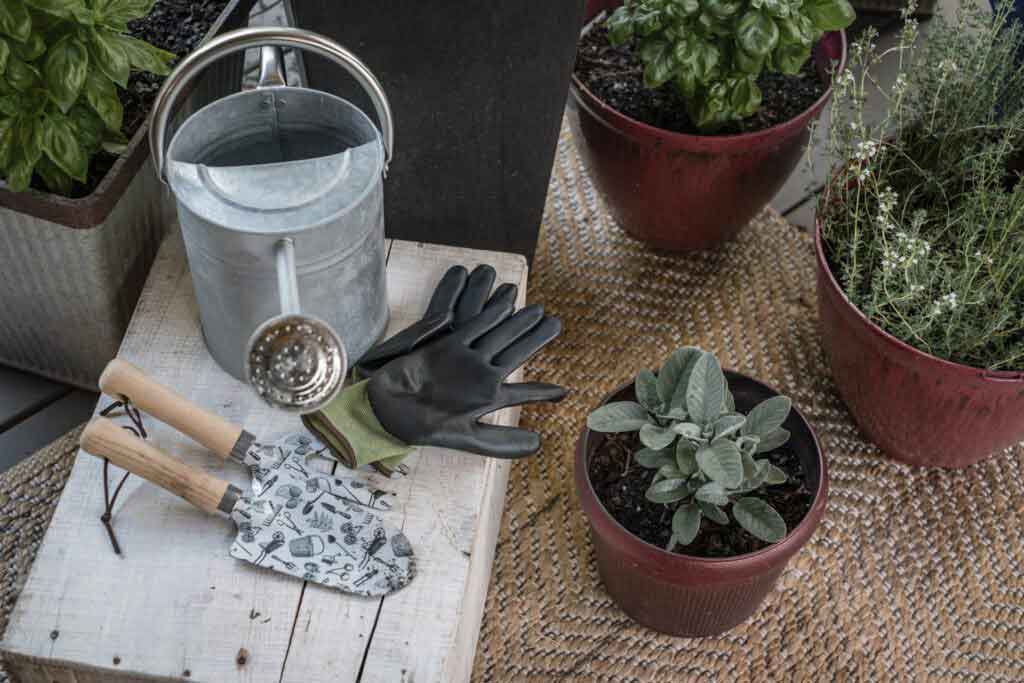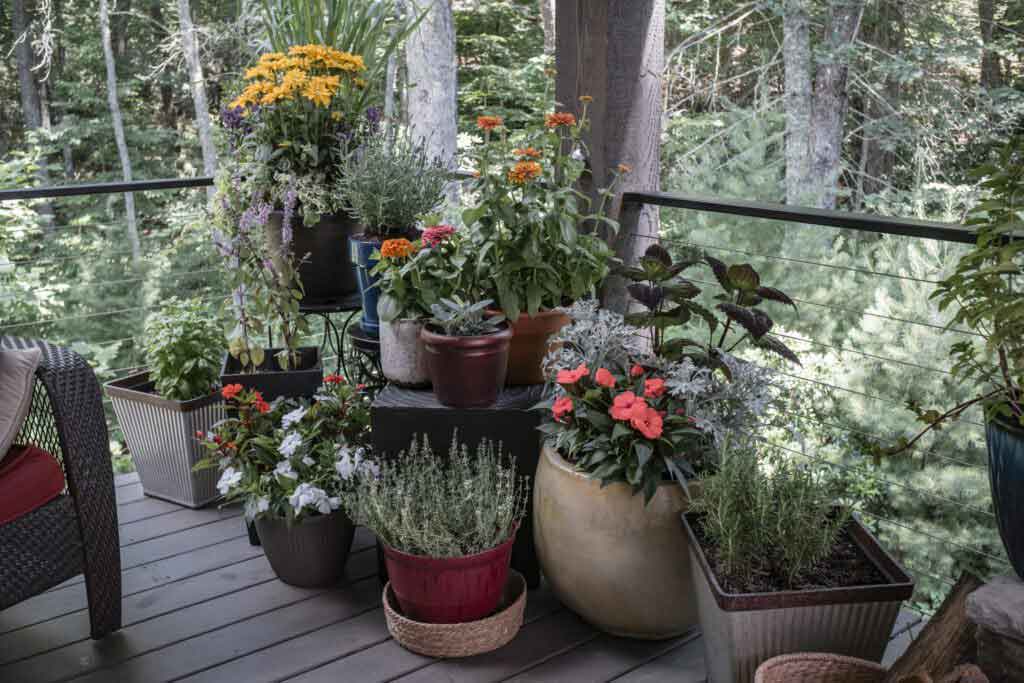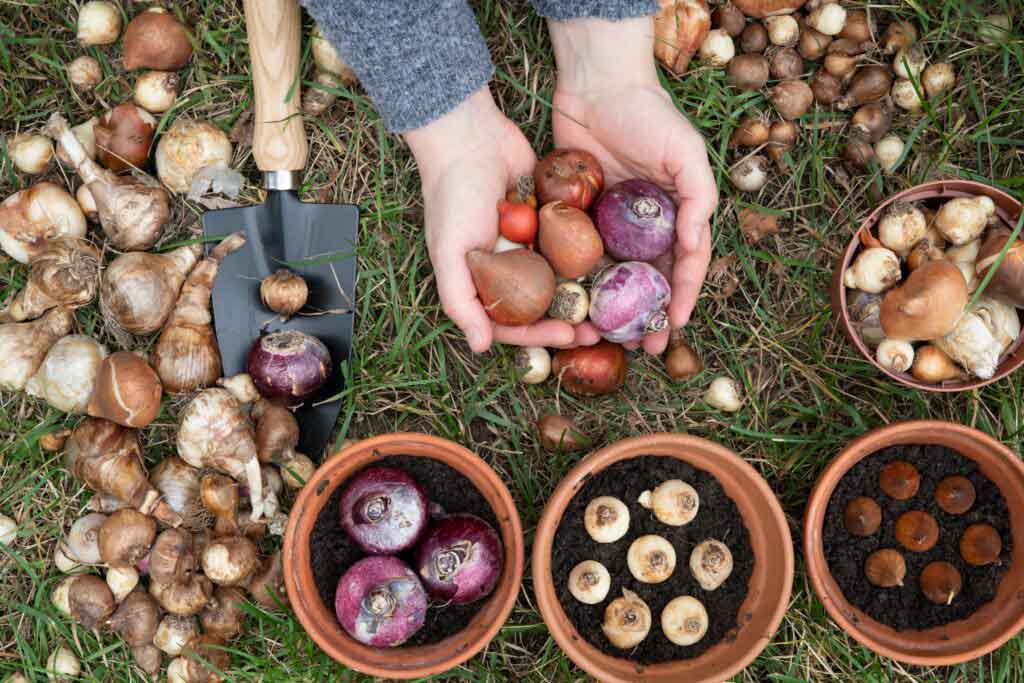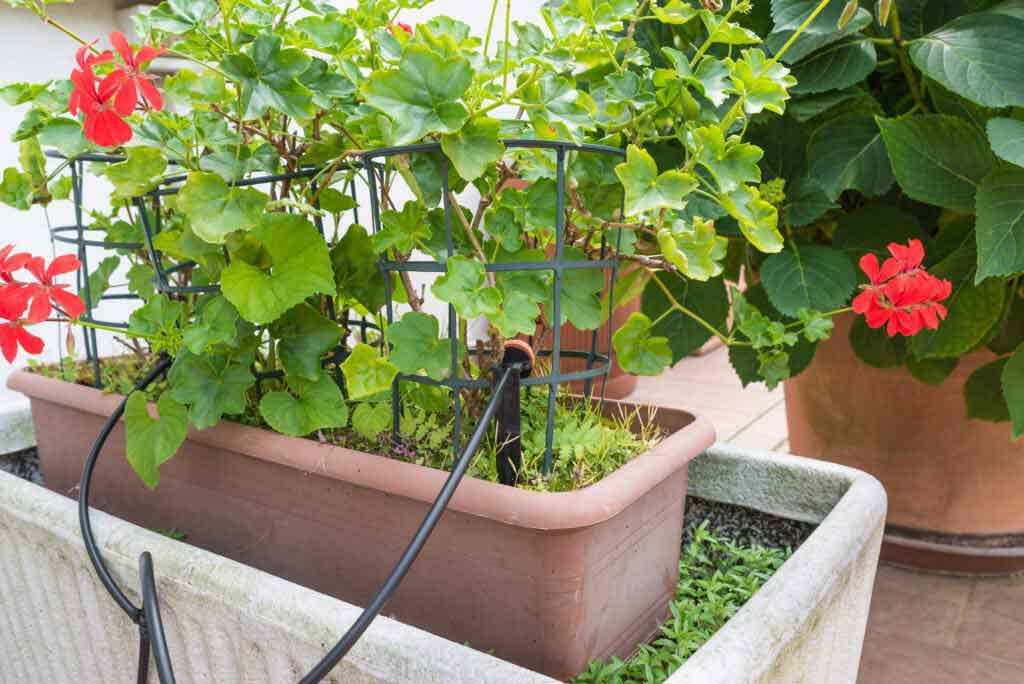Bring additional texture and color to your patio, garden, or balcony with easy-to-manage container gardens. Planting in multiple (and moveable) pots gives us the ability to bring flowers and vegetables to spaces we use most. Whether your home has a huge patio or you live in a one bedroom apartment, everyone can benefit from container gardening.

Add color and interest wherever you see fit. Dot your patio with color. Grow tomatoes or herbs on your kitchen counter. Flank your front door with shade loving greenery or full sun tropicals. We love introducing containers directly into the garden to bring height, interest, and color or fragrance to a garden bed. Decorating your space with containers can be a rewarding and manageable way to bring the plants that you love most closest to you.
Plan Your Garden – Assess your Space and Choose your Plants
Assess your home and patio and determine where you’ll place your containers. Consider the amount of sunlight the area receives and whether it’s sheltered from wind. Also think about how close the planters will be from a water source. Can you tie them into an existing water system, or will you need to use a hose or watering can? Spending time thinking about the day to day upkeep will help you make important decisions that will determine the success of your new plantings.

Next, decide what you want to grow. Consider the light, water, and space needs of different plants, especially if you are planting several different types of plants together in one container. Popular choices for beginners include herbs like basil or mint, as well as flowers like daisies and begonias. Vegetables and small shrubs can also be extremely rewarding.
Select Containers and Soil
Choose containers that are appropriate for the plants you want to grow. Deeper containers are needed for root vegetables and larger plants. Containers can be made of plastic, clay, ceramic, or wood. Each material has its pros and cons regarding weight, durability, and aesthetics.

Terra cotta, for example, is beautiful, but leeches the water away from the soil, requiring much more frequent watering. You may not want to put plants like elephant ears or foxglove that are water-sensitive in a porous material like terra cotta that will not thrive in dry soil. Ensure containers have drainage holes to prevent waterlogging.
Use a high-quality potting mix rather than garden soil, which can be too heavy and may not drain well in containers. Depending on the plants, you might need to add compost, perlite, or vermiculite to improve soil structure and nutrient content.
Stage your Plantings

Determine whether you want to plant bulbs or seeds or maybe both! Do you love flowers, veggies, herbs, or maybe all three? If planting from seed, plan out if you want to start them in starter containers and then transplant them as seedlings to their final destination, or if you want to start your seeds directly in your container gardens. For veggies, you may want to start tomatoes and peppers in smaller containers you can easily control, while flowers like lobelia, marigolds, or zinnias can be directly seeded. No matter what you start, follow the specific planting instructions for each plant. If you are not sure what you want to grow and the best way to do it, explore our plant finder for some customized suggestions.
Watering and Fertilizing
Water the soil thoroughly after planting to help settle your seeds, seedlings, or bulbs into the soil. Check the soil moisture regularly. Containers can dry out more quickly than garden beds. Water when the top inch of soil feels dry. Use a balanced, water-soluble fertilizer every few weeks according to the needs of your plants.
If there is a watering system nearby, we like to tap into that system. Prior to filling your pots with soil, run a tube up from the bottom through the drainage hole all the way up to the soil level. You can always hide hoses on the back of containers if you’re late to the game. This way, the watering source is semi-covered and your container will be watered on a system.

Maintenance
Remove dead or yellowing leaves and pinch back growth to encourage bushiness. Monitor for pests and treat as necessary with appropriate methods, whether organic or chemical. Rotate your containers occasionally for even sunlight exposure and replace the soil or add fresh compost yearly to maintain soil health.
Tips for Success
- Start Small – Begin with a few containers and a manageable number of plants. We can easily get excited and create more work and watering than we want, with chores that may start to feel like drudgery over time.
- Find the Light – Most vegetables and herbs need at least 6 hours of sunlight per day.
- Water Wisely – Water in the morning to reduce the risk of disease and evaporation.
- Keep Learning – Gardening is an ongoing learning experience. Keep experimenting and learning from your successes and mistakes.
- Celebrate – Share cut flowers or container harvests with friends and family who will be happy to celebrate even the smallest of achievements!
